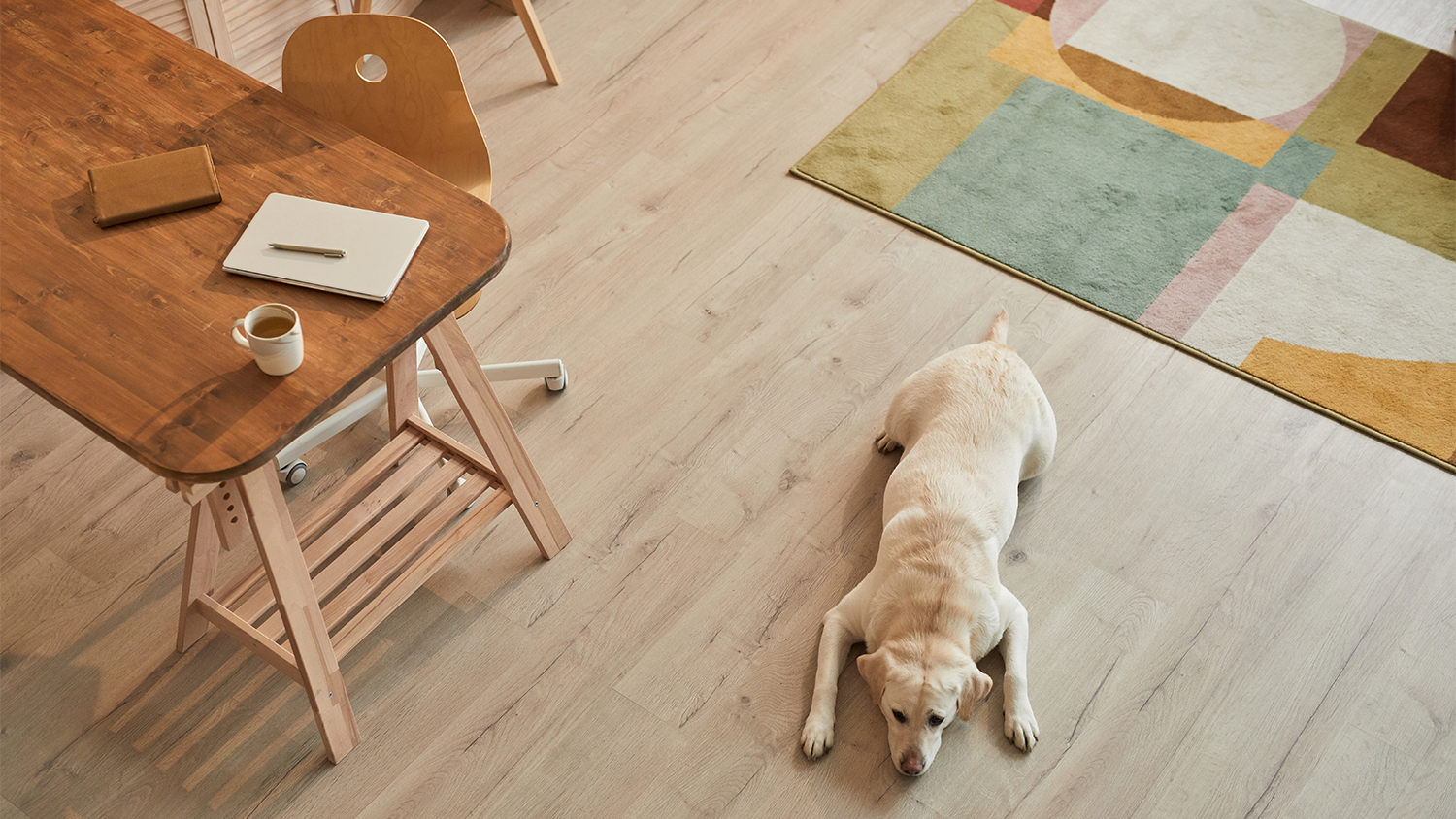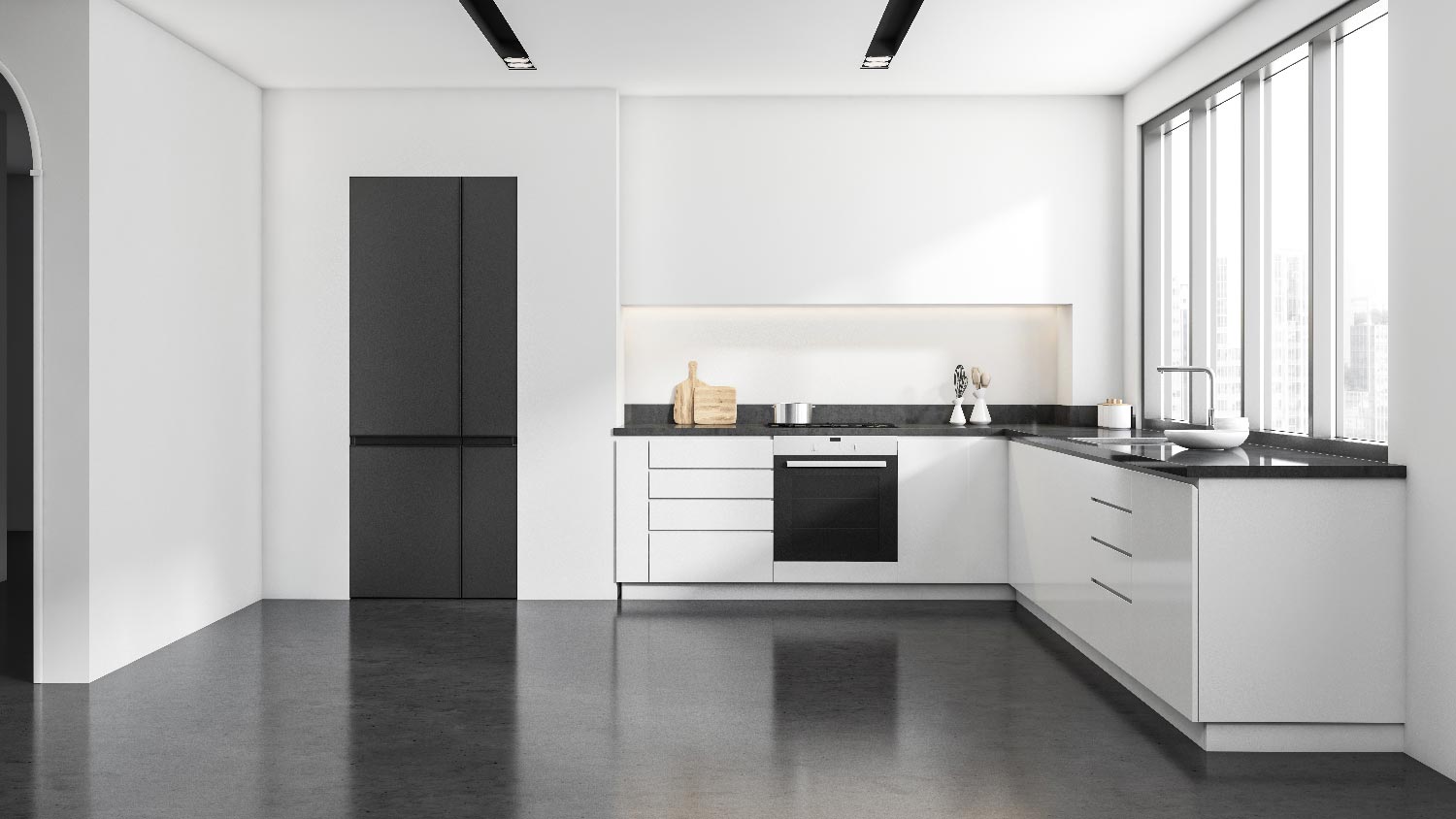
Updated flooring can make any room in your home feel brand new. Explore flooring installation costs in Baltimore, MD, from materials to labor costs.
This flooring solution is a game-changer if you want the look of wood without the cost


Luxury vinyl flooring is an affordable alternative to wood.
There are two types of LVF: luxury vinyl planks and tiles.
You can install LVF with either glue or an interlocking system.
LVF is a durable and waterproof surface.
Say you bought a fixer-upper and are looking at replacing the floors throughout the house. Unless you have a hefty cash surplus, hardwood flooring can eat up a large part of your renovation budget. The good news? There’s a flooring solution that emulates the look of wood you’re trying to achieve without the price point. Here are all the luxury vinyl flooring pros and cons before you dive into your project headfirst.
Luxury vinyl flooring (LVF) is a flooring solution for homeowners who want the look of wood without the high price tag. Made of a plastic composite, this flooring is specifically designed for the wear and tear that modern households experience, including wayward children and large pets with sharp, clattering claws that leave scratch marks behind and mar the finish of a traditional hardwood floor.

Luxury vinyl flooring is available in planks (LVP) or tiles (LVT). There are two common installation methods: glue-down or interlock.
The glue-down system is fairly straightforward and the fastest way to get luxury vinyl flooring down. The installation process is similar to ceramic tile or sheet vinyl:
Spread out an adhesive onto the subfloor with a grooved trowel.
Lay the LVP or LVT on top and press it into the glue.
Allow it to cure. It will take glue around 24 hours to dry, though you can likely walk on the floors delicately before that.
An interlocking system of luxury vinyl flooring uses a modern tongue-and-groove method to attach each piece and create a jigsaw puzzle-like surface. This installation is advantageous if you think you’ll ever replace your LVF with another type of flooring because it’s easy to remove. It is a bit more challenging to install than glue-down because you’ll need to connect each tile to its neighbor.
Luxury vinyl flooring is both durable and waterproof, which is why many homeowners prefer it. If there’s a spill or someone tracks in mud, it’s easy enough to wipe the stain right up. And the extremely strong nature of these manufactured plastic flooring panels makes scratches and nicks a thing of the past.
The cost to install luxury vinyl flooring—between $3 and $7 per square foot, including installation—is a price-savvy option for those looking to renovate a home on a budget. It’s just a slightly higher price point than linoleum, but the finished product has a much more high-end appearance.
If you’re looking to sell your house in the next couple of years, you might consider investing in a higher-end product like hardwood flooring since it will improve your home’s resale value while LVF will not have a significant impact on it.
Another feature that can potentially be a drawback with LVP flooring is that while the floors are made to mimic the appearance of wood slabs when you walk on them, it’s clear that the floor is plastic, so it doesn’t have the same feel beneath your feet as real wood flooring does.
The beauty of luxury vinyl flooring is that it’s a system that, once you learn it, becomes easy to install the next time. This is a project you can DIY if you put the time and effort into measuring the tricky transitions in your home and figuring out how the fastening system works. You’ll also need traditional wood flooring tools like a table saw, miter saw, jigsaw, and a pull saw; if you don’t own them already, you can likely rent them from your local equipment rental store.
However, if DIY flooring isn’t your thing or you’re a bit short on time, you can always request a quote from a professional flooring installer to put your LVT or LVP in for you. The installation will typically go quickly compared to a traditional hardwood flooring job. A pro job will likely take around two to five days for a one-story house, depending on what kind of prep is required before starting.
From average costs to expert advice, get all the answers you need to get your job done.

Updated flooring can make any room in your home feel brand new. Explore flooring installation costs in Baltimore, MD, from materials to labor costs.

If your laminate is damaged, it’s time for repairs or replacement. This guide will show you everything you need to know about laminate floor repair costs.
.jpg?impolicy=leadImage)
If your subfloor is damaged and needs replacing, expect the project to require a professional assessment and the proper materials.

Updated flooring can make any room in your home feel brand new. Explore flooring installation costs in Minneapolis, MN, from materials to labor costs.

Updated flooring can make any room in your home feel brand new. Explore flooring installation costs in Dallas, TX, from materials to labor costs.

There is more going on with moisture in your concrete than what meets the eye. Get to the bottom of it by testing moisture levels in your concrete floors.